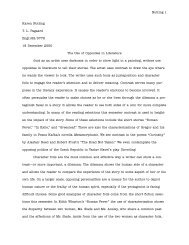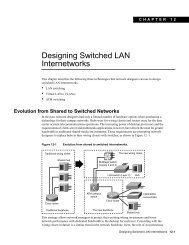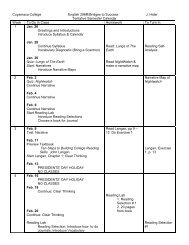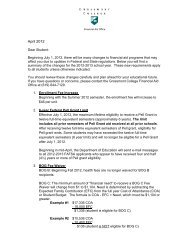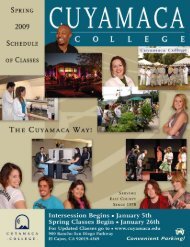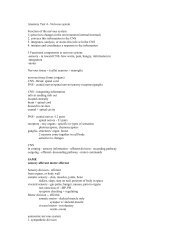SKILL PANEL REPORT California's Water Industry - Cuyamaca ...
SKILL PANEL REPORT California's Water Industry - Cuyamaca ...
SKILL PANEL REPORT California's Water Industry - Cuyamaca ...
You also want an ePaper? Increase the reach of your titles
YUMPU automatically turns print PDFs into web optimized ePapers that Google loves.
<strong>SKILL</strong> <strong>PANEL</strong> <strong>REPORT</strong> California’s <strong>Water</strong> <strong>Industry</strong>Getting to the point is what happens when studies, data and traditional thinkingare all on the table, there are no sacred cows, each person is very good at whatthey do, and the purpose of the meeting is to come up with new ideas. The taskwas to develop strategies for training <strong>California's</strong> next generation of waterindustry workers -- in time to replace retiring Baby Boomers.As it turns out, eligible for retirement is not the same as retirement. Nationalstudies indicate that Boomers want to continue earning a paycheck and healthinsurance. Generation X employees aren't going anywhere either; 62% of 45 to60 year olds told the Conference Board in a 2012 survey that their financialassets have lost 20% or more of their value. 4The survey respondents pointed to the bursting of the housing bubble, the stockmarket crash, salary reductions and layoffs. The respondents probably convinceda few colleagues, too, because a 2012 survey by the Pew Research Centerfound that 38% of adults are “not too” or “not at all” confident that they will haveadequate income and assets for retirement. 5 It looks like the silver tsunami won'thit until interest rates on retirement funds rise or the Dow reaches 16,000.The Next GenerationWith the tsunami alert rescinded, <strong>California's</strong> water and wastewater utilities canfocus on an equally serious issue: there is a shortage of middle skill workers.These are workers who have more than a high school diploma but less than abachelor’s degree. The options in between include industry-based certificates,academic certificates and two year associate degrees attained at a communitycollege.Companies are already feeling the pain. When the Manufacturing Institutesurveyed 1,100 U.S. manufacturers in 2010, 95% of respondents reported ashortage of machinists, operators, technicians, distributors and craft workers, and86% reported a shortage of engineering technologists. 6Unfortunately, the shortage is expected to get worse. A 2010 study by theGeorgetown University Center on Education and the Workforce forecasts anational shortage of 4.7 million middle skill workers by 2018. 7 What this means isthat the competition will intensify between industries that need students and jobseekers interested in middle skill careers,<strong>California's</strong> water and wastewater utilities won't escape this trend. Mostoperations jobs in water are middle skill jobs, but so are a multitude of positionsin healthcare, energy, manufacturing, construction, transportation, hospitality,financial services, business and retail. Research by the Workforce Alliance showsthat 50% of jobs in California are middle skill jobs, but middle skill workers makeup just 38% of the state's workforce. 8Study:Georgetown UniversityCenter on Education andthe Workforce8



